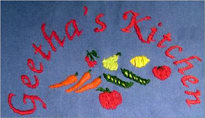Yogurt curries are ubiquitous all over India, but are made differently depending on the region; some are sweet-tart with fruits or sugar while others are hot and spicy without even a hint of sweetness. In South India yogurt curries are thickened with a coconut masala and called Mor Kuzhambu, Kootu/Curry, or Pulisseri, etc but in the North and West, it is typically made with besan (garbanzo flour) and called Kadi which may include vegetables or pakodas. And depending on the amount of Besan you use, the kadi can be thick or thin. It is a great way to use up old soured yogurt and leftover pakodas; addition of pakodas also can cause the kadi to thicken quite a bit as they absorb a goodly amount of the moisture. Buttermilk can also be used to make Kadi but less water may be required as buttermilk is typically not very thick.
Here is a recipe for mild Simple Kadi. This Kadi may be a North Indian type. It is based on my recollection of a Kadi made by Rema who grew up in the New Delhi area.
Here is a recipe for mild Simple Kadi. This Kadi may be a North Indian type. It is based on my recollection of a Kadi made by Rema who grew up in the New Delhi area.
Ingredients:
1 cup sour Yogurt
4 Tbsp Besan
1 tsp Sea Salt
3 cups water
1 Tbsp Oil
1/2 tsp mustard seeds
1/2 tsp Cumin Seeds
1/2 tsp Turmeric
1 or 2 Hot green or Dry Red chilies
A few Curry Leaves
1 medium Onion, chopped (optional)
1 Tbsp Ginger, minced (optional)
Method:
Combine besan, salt and yogurt with the water and mix well using a wire whisk.
Heat the oil in a large sauce pan; when hot add the mustard and cumin seeds and swirl to evenly heat them.
When the seeds sizzle and pop, add the chilies, onion, ginger and the curry leaves and cook until onions begin to soften, about 2-3 minutes.
Stir in the turmeric and the yogurt mixture and cook stirring frequently until the kadi is almost boiling.
Turn heat down and simmer the kadi very gently for a few minutes - about 10 minutes.
If you have leftover pakodas, this is the time to add them.
Remove from heat, cover and allow to rest for a few minutes.
Serve hot with rice or rotis.
Kadi is delicious served over plain rice with Sprout Salad, sprouted/regular bean chundal, and/or a green veggie. Enjoy!!








